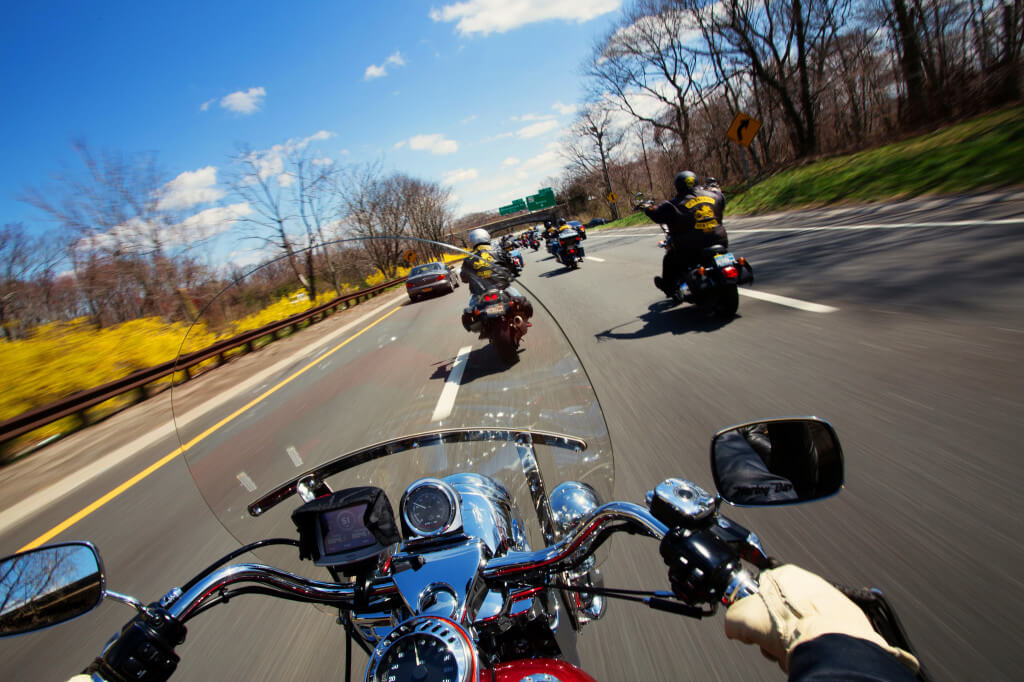Tips for Riding in a Group of Motorcycles

Though motorcycle riding is often a solitary experience, riding in a group is the essence of being a biker. However, group riding comes with added risks. A recent National Highway Traffic Safety Administration (NHTSA) study showed that risks associated with group riding include covering too much road, mixing riders of various skill levels, and general chaos contributing to the unpredictability of group rides. With a little bit of planning and proper group ride etiquette, you’ll be ready for a safe and fun group road trip.
Meet before you ride
First and foremost, make sure you’re ready to roll before meeting with your group. Fill your tank and take care of any maintenance issues. Then get together with the group for a pre-departure meeting. This can as informal as meeting in a parking lot and exchanging cellphone numbers with fellow riders.
During this meeting, be sure to ask:
- What is the route?
- Where will the group stop?
- What happens if you’re separated from the group?
If you’re the group’s organizer, take into account the group’s stamina, rider experience, and equipment limitations before embarking. Casual group rides generally consist of five to seven riders because it can be difficult to keep track of everyone in a larger group. When participating in a larger rally, it’s best to divide into several smaller groups so no one is overlooked.
Ride Predictably
It’s important not to try anything on your bike that makes you uncomfortable. Always maintain the same safety precautions you would if you were traveling by yourself. Yet, the close proximity of other riders means you have to be even more aware of your surroundings in order to stay safe.
- Always maintain 2 seconds space between you and the riders in front and behind you.
- To stay tight with the group while remaining loose enough to react to any road hazards, stay in a staggered riding formation to provide a sufficient space between group members.
- Be sure to leave enough room so riders next to you can maneuver side-to-side if necessary.
- If you’re traveling on a curvy road or visibility is poor, transition into a single-file formation. Single-file formations are also advised for highway entrances or exits, toll booths, or on difficult road surfaces.
- Riders with passengers should stay to the right whenever possible.
Know the hand signals
Rally participants often use hand signals to communicate during the ride. Make sure you know the signals so you don’t get surprised and fallout of formation.
- To signal you need to stop for fuel, extend your arm to the side and point to the tank with your finger.
- To signal you need a rest stop, extend your forearm with your fist clenched and make a short up and down motion.
- To signal a hazard in the road, point with your right foot or your left hand.
- To indicate fellow riders to follow you, keep your arm extended straight up from the shoulder with your palm facing forward.
- To signal acceleration, extend your arm to the side with your palm facing up.
- To signal deceleration, extend your arm to the side with your palm facing down.
Photo courtesy of NY Times


